Saint George Slays the Dragon
Artist: Paris Bordon
Date: Mid XIV century
Classification: Painting
Dimensions: 290 X 189 cm
Materials: Olio on panel
Total Cost: € 100,000
Description
This large painting decorated the altar of the Franciscan church of St. George in Noale near Venice. It remained there until 1769. The altarpiece is a masterpiece of the youthful activity of Paris Bordon (Treviso 1500 - Venezia 1571). Pupil of Titian, Bordon soon became one of the leading exponents of Venetian Mannerism. His vibrant colorism, the sculptural power emitted by the protagonists, and the bold perspective foreshortening in diagonal, which characterize this painting, were typical of the manner of a Pordenone painter.
State of Preservation
In recent years, the fragile conservation conditions of the artwork have been reported. The painting has undergone several restoration interventions, mainly aimed at solving the conservation problems caused by its support. In 1954 Giovanni Micozzi realized a complete restoration of the work by securing the detachments of the pictorial film. Currently, the painted surface, in addition to the problems of adhesion to the support, presents a strong darkening caused by the alteration of the overlaid varnishes.
Restoration Procedures
The work requires both an anoxic treatment and a brush treatment using suitable permethrin-based products. The cracks and joints of the boards will be fixed and a new system of containment will be provided. The consolidation of the pictorial film will be completed with the painting reintegration by using water and varnish colors. A nebulized varnish will give the work a final protective layer.
Detail
Inventory N°: 40354
Artist: Paris Bordon
Date: Mid XIV century
Dimensions: 290 X 189 cm
Materials: Olio on panel
Department:
XV-XVI Century ArtCurators:
Dr. Fabrizio Biferalimuseum:
PinacotecaLaboratories:
Painting & WoodWishbook year: 2021
Total Cost
€ 100,000
Final Restoration Report - Saint George Slays the Dragon
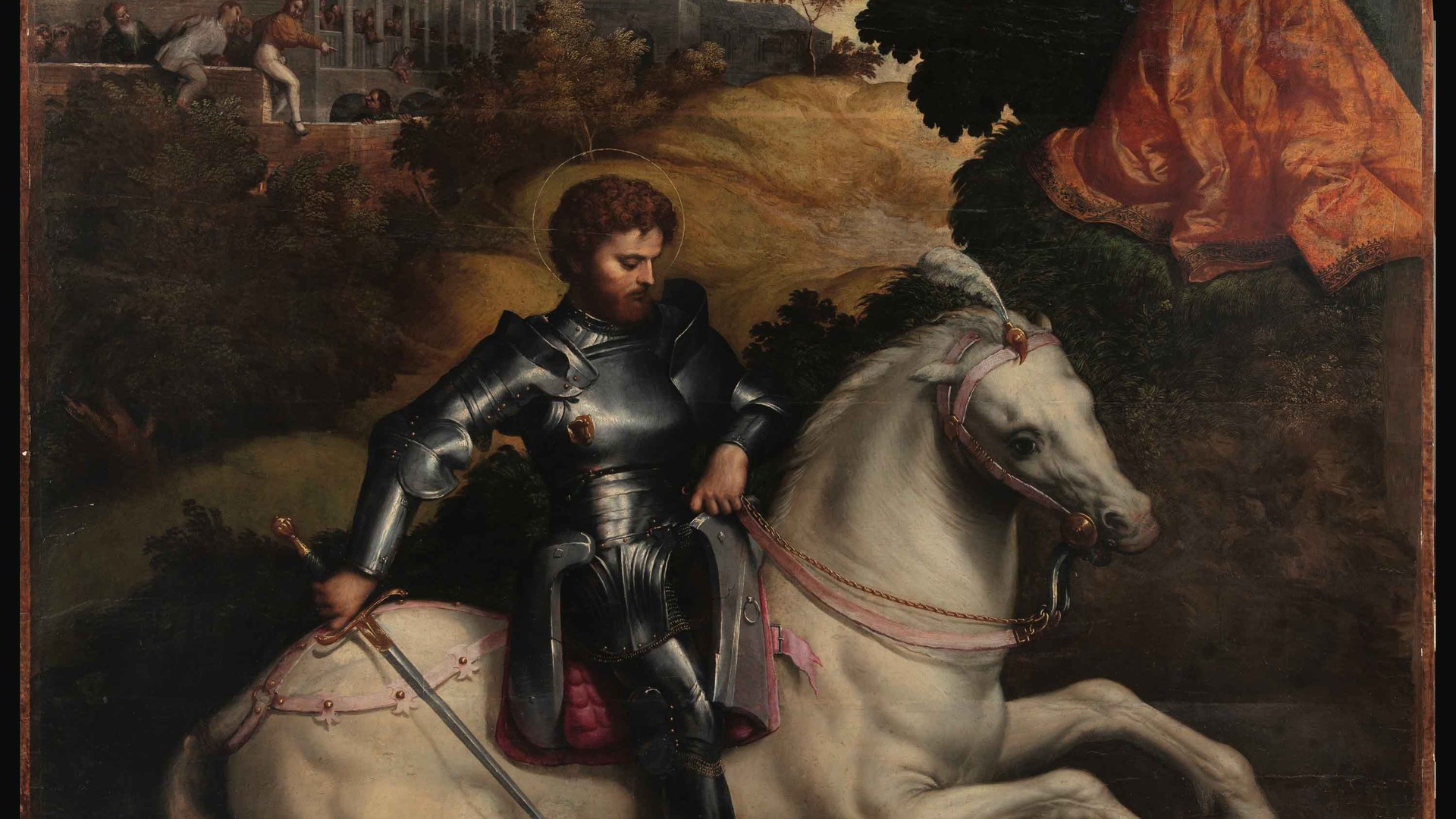
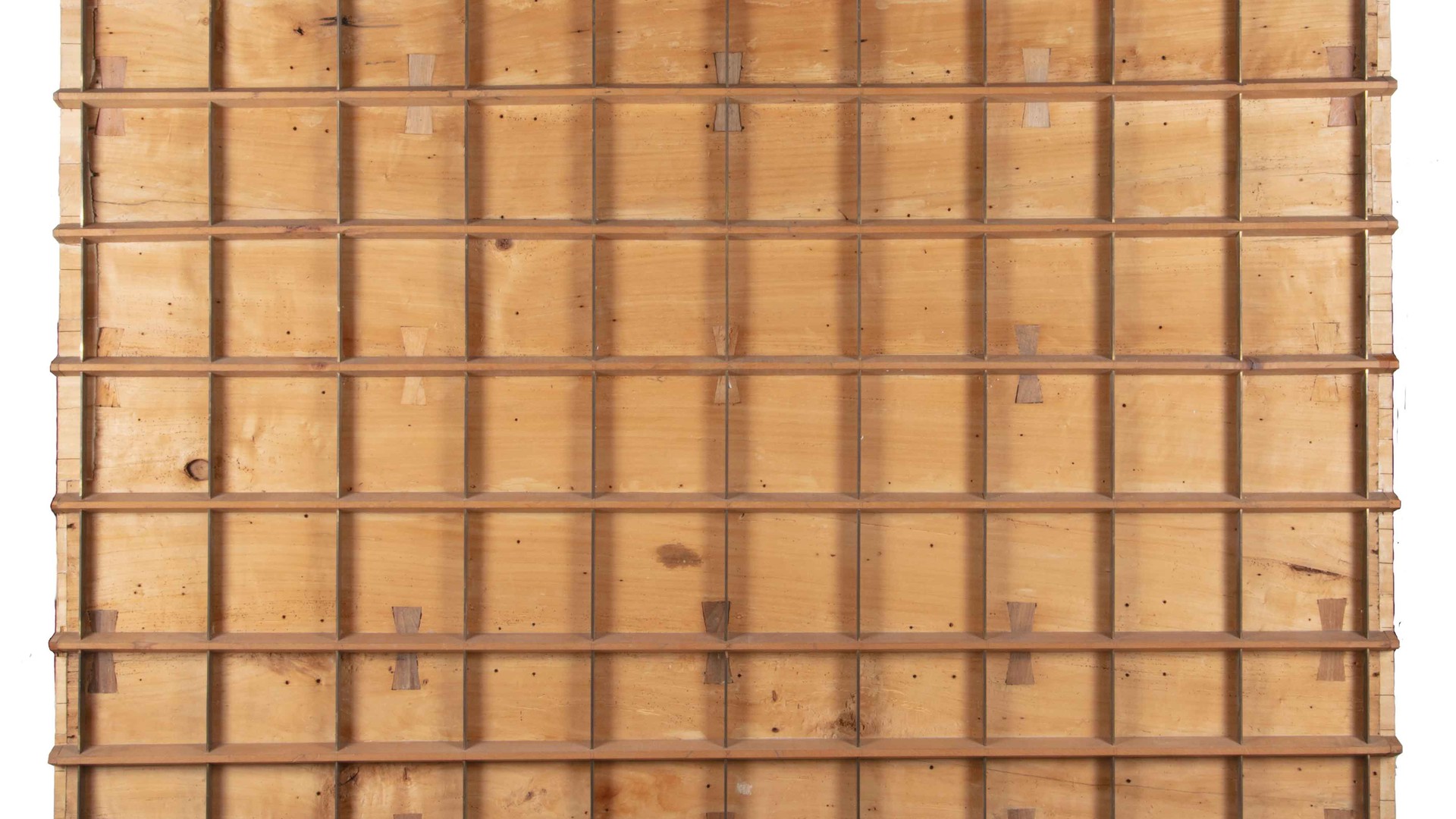
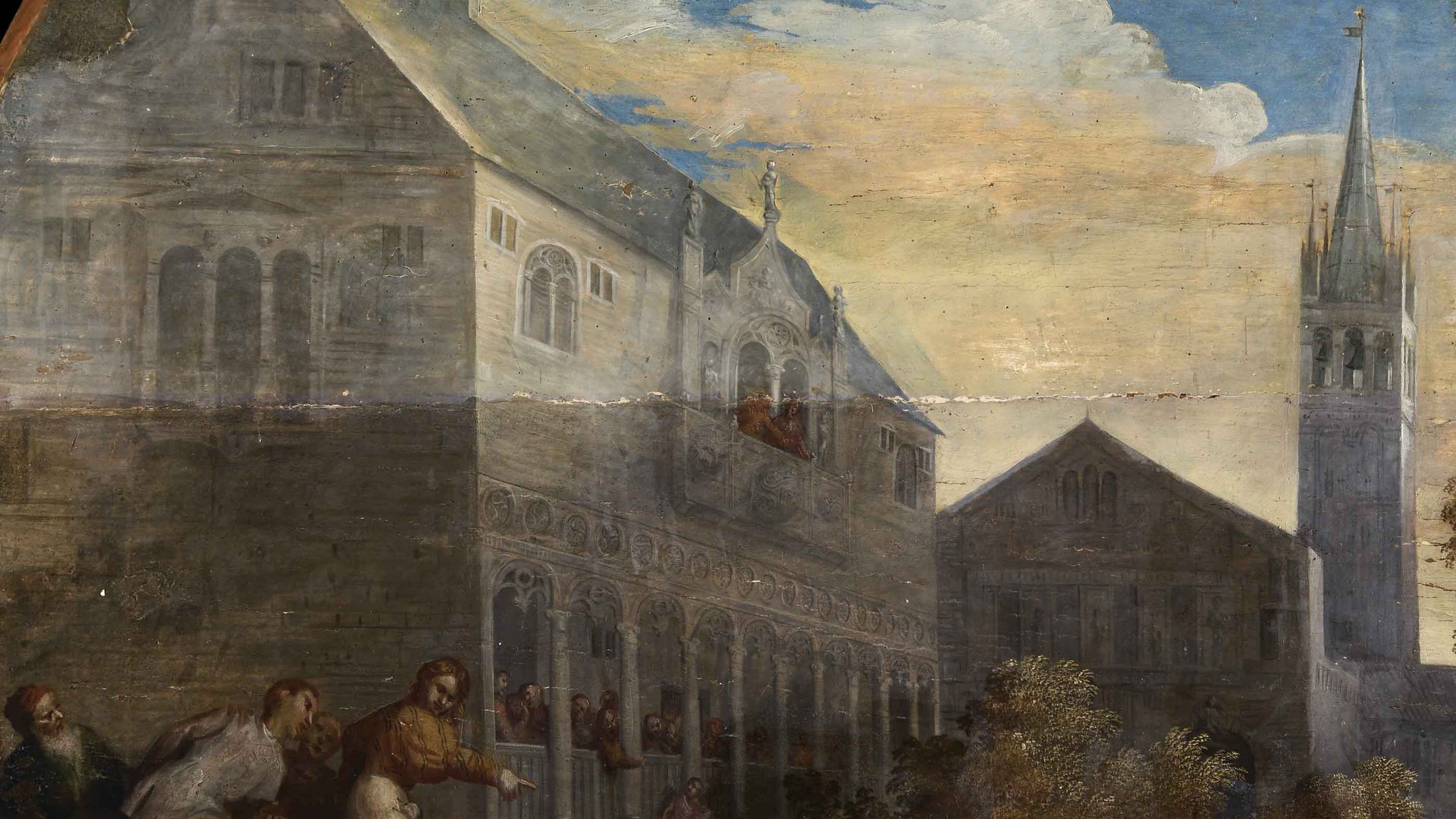
The painting, oil on wood, includes eight panels of poplar wood, glued together and positioned horizontally. In the first restoration executed in 1955, the restorers liberated the work of the old cross beams glued to the boards and fixed them with screws and metallic brackets. A thining process took place and left one suspension of 1,2 cm. The back had an application of new parquetry, constructed from 17 uprights glued and 11 brass crossbeams. The cleaning removed some re-paintings on the figure of the dragon. The head shrunk, and the neck turned from left to right.
In 1969, another restoration intervention was necessary because of the lifting of the pictorial film caused by the continuous movement of the support. Restorers fixed the fissures, and they found it necessary to restore the function of the parchet. It became no longer functional, continuing to provoke the excessive movement of the wood fibers that had missing colors.
The present intervention, for this urgent motive, is indispensable. It started with the progressive removal of the previous parchet. After restorers worked on the support, they made a new system of containment that can better distribute and support the weight, preventing excessive various dimensions and deformations of the panel if it should oxidize from the relative humidity. The new structure, in stainless steel, designed in collaboration with the Cabinet of Scientific Research with the Beni Culturali of the Vatican Museums and realized with the Mechanical Workshop of the Vatican City State, fixed beech wood elements to the back and connected them to the new frame with steel pins. They inserted compression springs that support the weight of each plank to guarantee the unloading directly on the base of the frame and to avoid the structure's weight on the work.
The additional aesthetic restoration revealed that the painting had not undergone a uniform cleaning. The areas that include the figure of Saint George and the horse are well-preserved and cleaned. The restorers noticed alterations made to these areas caused by aggressive solvents that often left traces of irreversibility. On many parts in the background, like the trees and bushes, there were layers of old oxidized paint, which impeded the correct reading of the image.
The cleaning involved the removal of a more recent varnish and the old, altered reintegrations. Next, the restorers removed the areas with residuals of old coatings with a solvent pad. In the case of the sky, restorers used a preventive application of a solvent mixture on Japanese paper. The pictorial film of the sky has blue crystal pieces, which tenaciously held the extra substances on the surfaces, rendering the removal to be difficult. Therefore, restorers never conducted it in previous interventions, and the original blue had a somber tone.
Thanks to the cleaning, the painting recovered the correct chromatic and chiaroscuro relationships between the parts, revealing a miraculous chromatic range in the characters in the foreground and background of the picture. More details in the vegetation have re-emerged in an indistinct dark tone, showing the precious passage from light to dark in the various shades of green. A minimal pictorial reintegration of the gaps concluded the intervention.
Before and during the restoration of the work, some scientific discoveries targeted the study of the conservation and material state. The information determined the areas with pictorial film damage and the artist's changes during their work. Thanks to the infrared reflectography at 1900 nm, results are evident, and there were many important changes. The final version of the head of the horse presents a significant variation in the position and the decoration.

Saint George Slays the Dragon

Details
Inventory: 40354
Artist: Paris Bordon
Date: Mid XIV century
Classification: Painting
Materials: Olio on panel
Dimensions: 290 X 189 cm
Museum: Pinacoteca
Department: XV-XVI Century Art
Laboratory: Painting & Wood
Wishbook year: 2021
Description
This large painting decorated the altar of the Franciscan church of St. George in Noale near Venice. It remained there until 1769. The altarpiece is a masterpiece of the youthful activity of Paris Bordon (Treviso 1500 - Venezia 1571). Pupil of Titian, Bordon soon became one of the leading exponents of Venetian Mannerism. His vibrant colorism, the sculptural power emitted by the protagonists, and the bold perspective foreshortening in diagonal, which characterize this painting, were typical of the manner of a Pordenone painter.
State of Preservation
In recent years, the fragile conservation conditions of the artwork have been reported. The painting has undergone several restoration interventions, mainly aimed at solving the conservation problems caused by its support. In 1954 Giovanni Micozzi realized a complete restoration of the work by securing the detachments of the pictorial film. Currently, the painted surface, in addition to the problems of adhesion to the support, presents a strong darkening caused by the alteration of the overlaid varnishes.
Restoration Procedures
The work requires both an anoxic treatment and a brush treatment using suitable permethrin-based products. The cracks and joints of the boards will be fixed and a new system of containment will be provided. The consolidation of the pictorial film will be completed with the painting reintegration by using water and varnish colors. A nebulized varnish will give the work a final protective layer.
Media
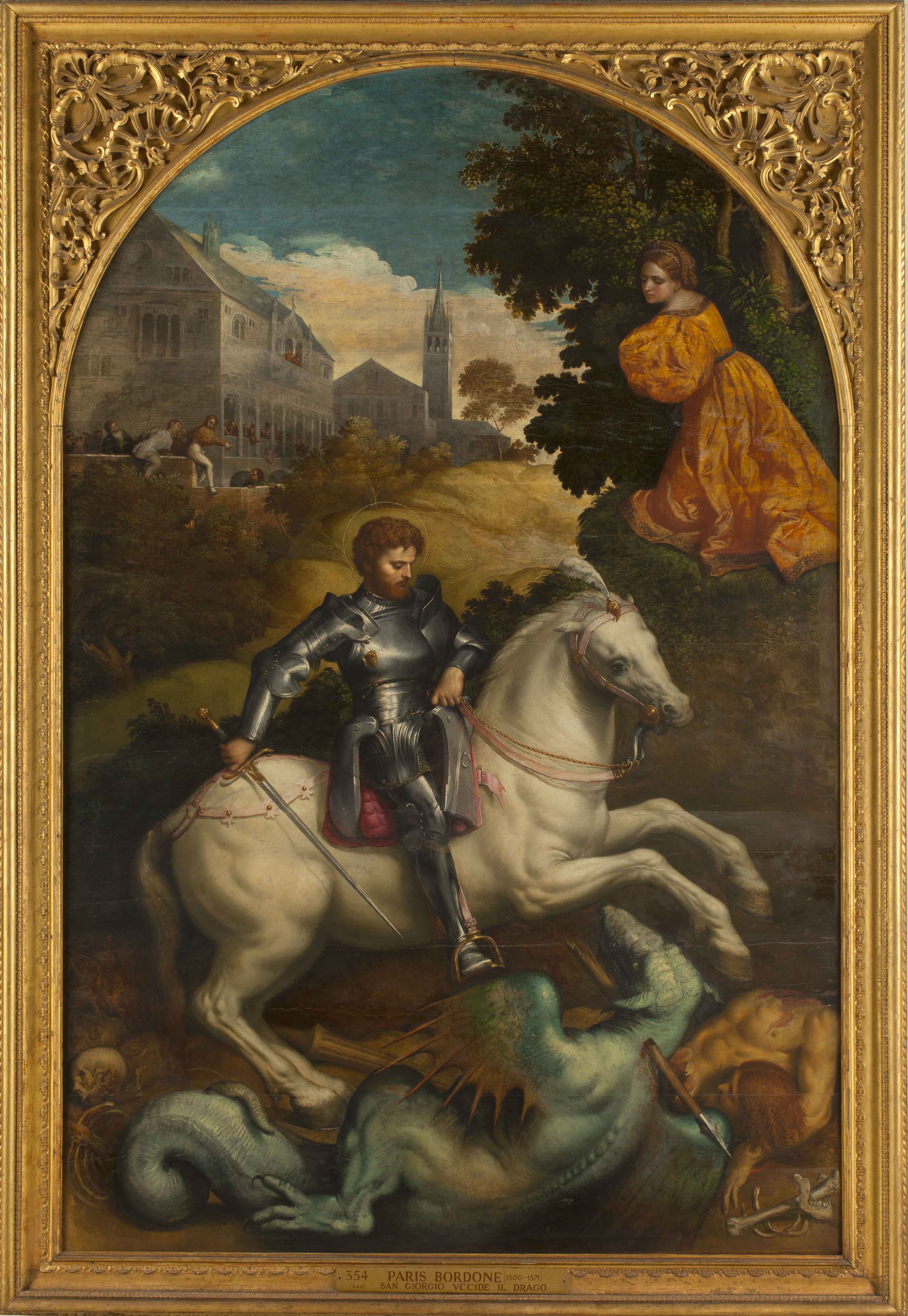
Saint George Slays the Dragon

Saint George Slays the Dragon - After Restoration
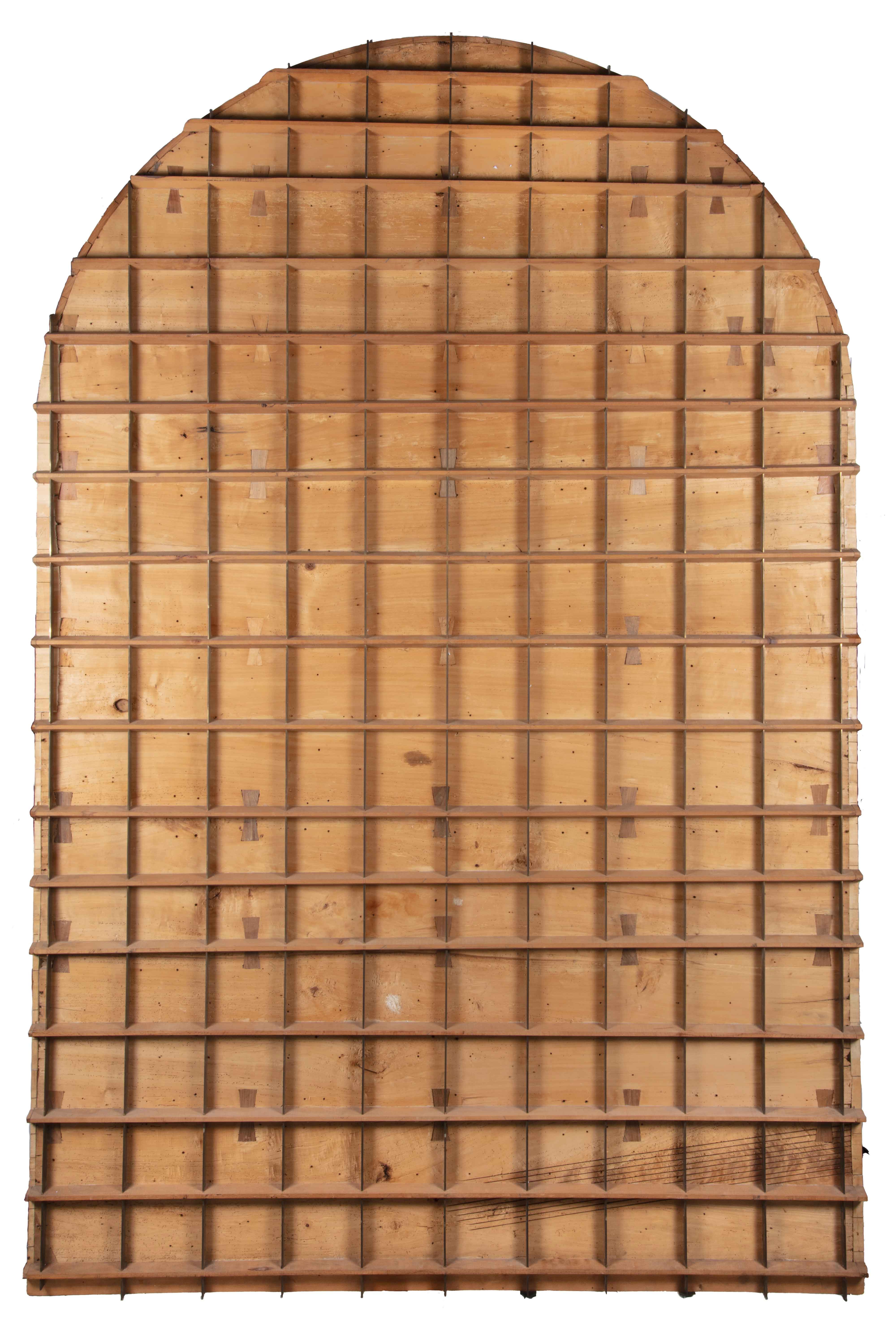
Saint George Slays the Dragon - Back before restoration
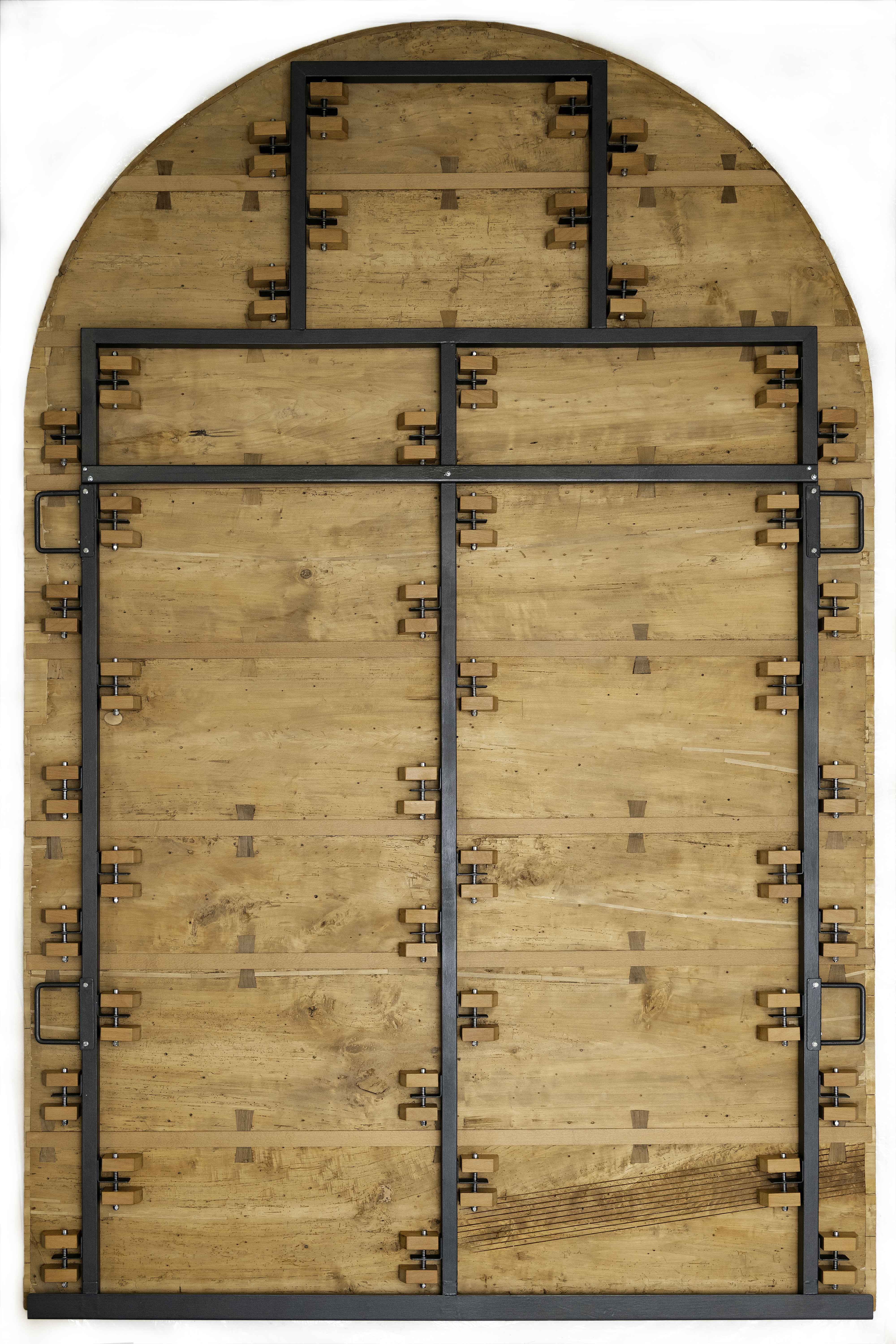
Saint George Slays the Dragon - Back after restoration
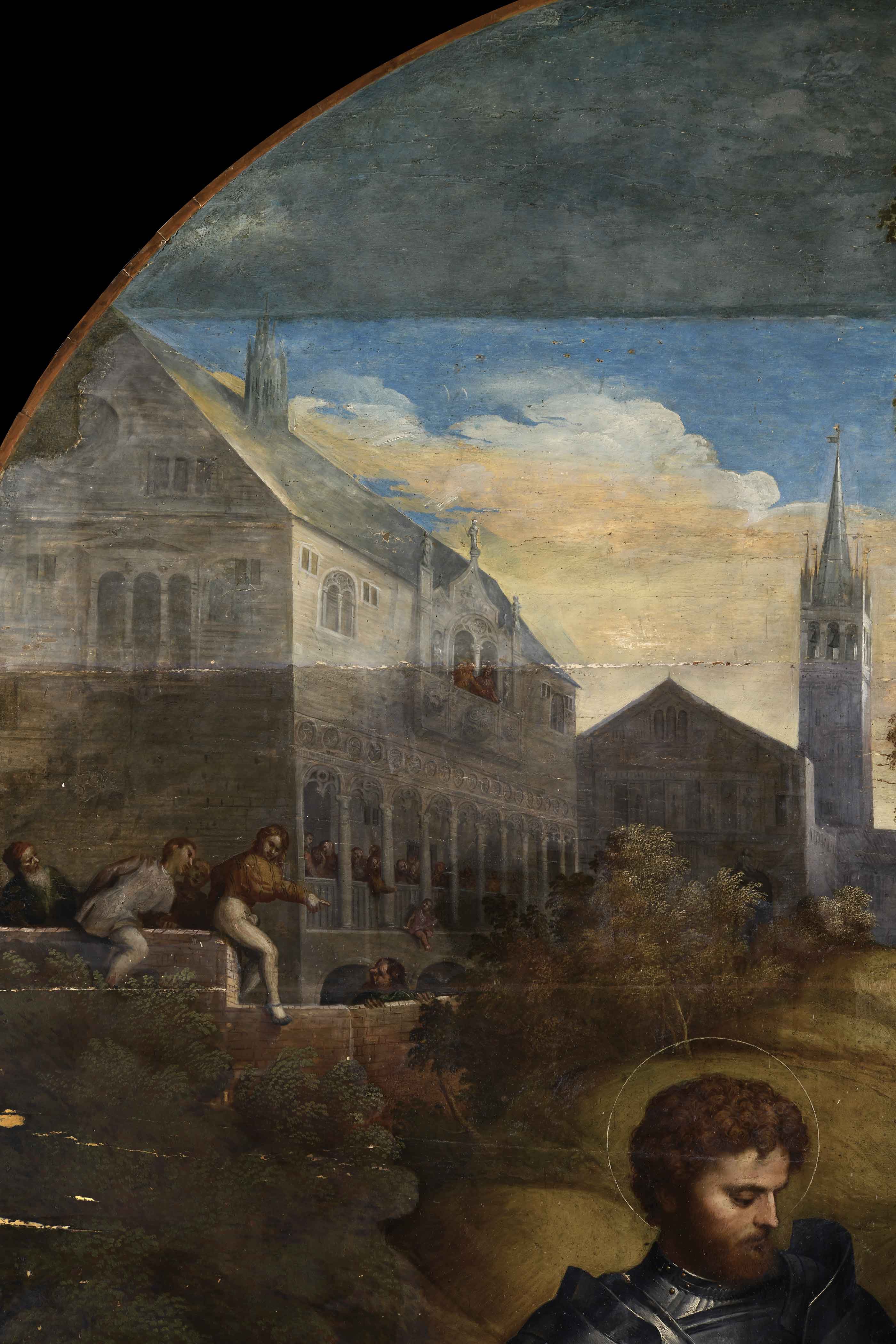
Saint George Slays the Dragon - During Restoration
Restorations Update: Final Restoration Report - Saint George Slays the Dragon

The painting, oil on wood, includes eight panels of poplar wood, glued together and positioned horizontally. In the first restoration executed in 1955, the restorers liberated the work of the old cross beams glued to the boards and fixed them with screws and metallic brackets. A thining process took place and left one suspension of 1,2 cm. The back had an application of new parquetry, constructed from 17 uprights glued and 11 brass crossbeams. The cleaning removed some re-paintings on the figure of the dragon. The head shrunk, and the neck turned from left to right.
In 1969, another restoration intervention was necessary because of the lifting of the pictorial film caused by the continuous movement of the support. Restorers fixed the fissures, and they found it necessary to restore the function of the parchet. It became no longer functional, continuing to provoke the excessive movement of the wood fibers that had missing colors.
The present intervention, for this urgent motive, is indispensable. It started with the progressive removal of the previous parchet. After restorers worked on the support, they made a new system of containment that can better distribute and support the weight, preventing excessive various dimensions and deformations of the panel if it should oxidize from the relative humidity. The new structure, in stainless steel, designed in collaboration with the Cabinet of Scientific Research with the Beni Culturali of the Vatican Museums and realized with the Mechanical Workshop of the Vatican City State, fixed beech wood elements to the back and connected them to the new frame with steel pins. They inserted compression springs that support the weight of each plank to guarantee the unloading directly on the base of the frame and to avoid the structure's weight on the work.
The additional aesthetic restoration revealed that the painting had not undergone a uniform cleaning. The areas that include the figure of Saint George and the horse are well-preserved and cleaned. The restorers noticed alterations made to these areas caused by aggressive solvents that often left traces of irreversibility. On many parts in the background, like the trees and bushes, there were layers of old oxidized paint, which impeded the correct reading of the image.
The cleaning involved the removal of a more recent varnish and the old, altered reintegrations. Next, the restorers removed the areas with residuals of old coatings with a solvent pad. In the case of the sky, restorers used a preventive application of a solvent mixture on Japanese paper. The pictorial film of the sky has blue crystal pieces, which tenaciously held the extra substances on the surfaces, rendering the removal to be difficult. Therefore, restorers never conducted it in previous interventions, and the original blue had a somber tone.
Thanks to the cleaning, the painting recovered the correct chromatic and chiaroscuro relationships between the parts, revealing a miraculous chromatic range in the characters in the foreground and background of the picture. More details in the vegetation have re-emerged in an indistinct dark tone, showing the precious passage from light to dark in the various shades of green. A minimal pictorial reintegration of the gaps concluded the intervention.
Before and during the restoration of the work, some scientific discoveries targeted the study of the conservation and material state. The information determined the areas with pictorial film damage and the artist's changes during their work. Thanks to the infrared reflectography at 1900 nm, results are evident, and there were many important changes. The final version of the head of the horse presents a significant variation in the position and the decoration.



© 2025 Patrons of the Arts
in the Vatican Museums
Vatican Museums V-00120,
Vatican City State (Europe)
+39 0669864499
